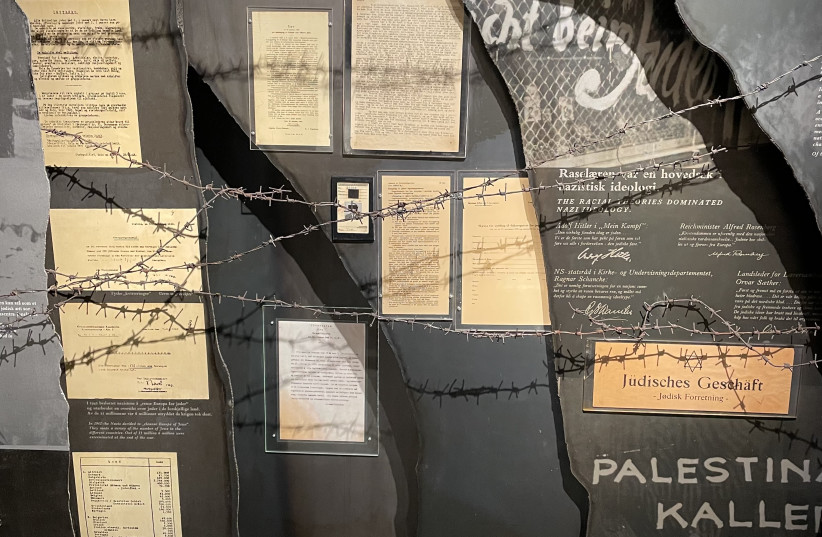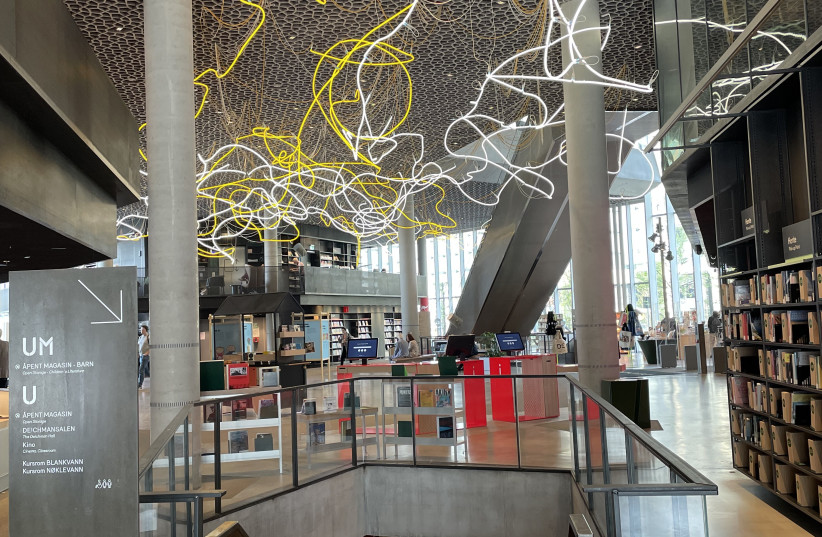Norway is rich. It ranks number five in the world, just behind Qatar (#4) and ahead of the US (#7) and Israel (#13) – in terms of gross domestic product (GDP) per capita.
Norway is also one of the world’s biggest investors, with $1.4 trillion in its sovereign wealth fund – including investments worth billions of dollars in about 70 Israeli companies.
But even with all that money floating around, Oslo, Norway’s capital, isn’t ostentatious. There are few skyscrapers; the city’s tallest building has only 37 floors. The harbor isn’t crammed with superyachts, and the roads aren’t gridlocked with luxury SUVs.
In fact, there are relatively few cars on the streets, and those cars are mostly electric; 80% of the new cars sold in Norway are battery-powered. Taxis are likely to be Teslas. As a result, the Oslo air is clean and the city is quiet.
Norwegians don't flaunt their wealth
Norway isn’t going electric because it’s oil poor. Its exports of fossil fuels generated revenue of $180 b. in 2022. But for internal use, Norway uses mostly renewable energy, such as hydropower.

Norwegians aren’t generally flashy dressers – except when it comes to bunads: folk costumes worn for festive occasions like weddings, trips to the opera, and Norway’s Constitution Day (May 17).
Seventy percent of Norwegian women and 20 percent of men own a bunad. There are about 450 different regional designs, and it’s traditional to wear a bunad from a place your ancestors came from. A head-to-toe bunad getup, from hand-embroidered cap to buckled shoes, can cost NIS 7,500 to NIS 37,000. Norwegians debate whether it’s kosher to design your own bunad, and if it’s appropriate for people who aren’t of Norwegian heritage to wear one.
Norway is more diverse than some might expect. Of the 700,000 people who live in Oslo, about 33% were born in a different country or have immigrant parents.
Between 1,300 and 2,000 Jews live in Norway today, out of a total population of 5.4 million in a land area a little smaller than California. In 1942, there were at least 2,173 Jews in Norway. Many escaped with the help of the Norwegian resistance movement when the Nazis invaded, but at least 765 were murdered.
Oslo has a small Jewish Museum in a former synagogue and a Center for Studies of Holocaust and Religious Minorities in the Villa Grande – the former home of Vidkun Quisling, head of the National Socialist party in Norway and Hitler’s Norwegian puppet government. Jewish victims are memorialized by brass stolpersteine (“stumbling stones”) set into sidewalks near where Jews lived until they were deported and killed by the Nazis.
Norway’s tragic Jewish history is also depicted in the Resistance Museum in Oslo’s Akershus Fortress and in giant murals in City Hall, where the Nobel Peace Prize is awarded.

While expensive, Oslo is still cheaper then Tel Aviv
ALTHOUGH OSLO is considered an expensive city, it can be cheaper than Tel Aviv for tourists.
For example, a double room in June at the luxurious five-star Hotel Continental in downtown Oslo, next to the Royal Palace gardens, will cost about NIS 1,160, including a lavish breakfast buffet. A comparable hotel in Tel Aviv for the same date runs about NIS 2,000 to NIS 3,500 per night.
There’s plenty to do in Oslo, whether you like nature, museums, shopping, architecture, or just wandering around.
With an Oslo Pass, you can get free entrance to 30 museums and other sites, plus free public transportation – including on local ferries.
Oslo is adorned with greenery, with a tree cover rate of 72% – the highest of any European capital. The Vigeland Sculpture Park is free and contains more than 200 works in granite, bronze and wrought iron. The sculpture garden outside the Astrup Fearnley Museum of Modern Art, at the end of the Aker Brygge harborside promenade, is also free.
Norway has invested its petro-kroner in magnificent public buildings, including the Oslo Opera House (also home to the national ballet). The gleaming white structure rises from the bank of the Oslofjord like a glacier, clad in marble and granite. Guided tours in English can be booked via the box office.
Just across the street from the Opera House is the new Deichman Bjorvika main public library, which opened in 2020, and has a café and an adorable book-themed gift shop.
The new National Museum, opened in 2022, is the largest art museum in the Nordic countries. The collection includes older and modern art from Norway and elsewhere, royal gowns and furniture.
If you’re into hi-tech (or traveling with kids), Viking Planet offers virtual reality experiences and immersive 270-degree cinema.
Nearby, the City Hall courtyard is decorated with monumental wood carvings based on (often lurid) tales from Norse mythology.
Oslo’s main pedestrian shopping street is Karl Johans Gate. At Norway Designs, you can find locally designed art glass, ceramics, fashions, jewelry, paper products, kitchen utensils and watches.
Some call Markveien (near the Jewish Museum) the best street in Oslo. It’s lined with boutiques and vintage shops, bars, restaurants and the Chillout Travel Store. A used-clothing store like UFF can be a great place to find a mint-condition Norwegian wool sweater for less than NIS 200 – about 20% of the price of a new one.
If you need a pick-me-up after all that shopping, the upscale Tim Wendelboe coffee shop is around the corner from Markveien on Gruners Gate.
Kosher food can be found in many grocery stores and in the community-operated kosher shop, which also offers kosher catering.
It’s possible to fly from Tel Aviv to Oslo for less than NIS 1,200 round trip. The cheapest month (not surprisingly) is January (average high temperature: 0°C.) and the most expensive is July (high of 23°). The best deals are found by booking 60 days in advance and on discount airlines with long layovers. The shortest flight time is less than seven hours.
Getting from the airport to downtown Oslo is easy. It’s a one-minute walk from baggage claim to the Flytoget airport express train, which takes 19 minutes to get to the National Theater station across the street from the Hotel Continental. You can even print your luggage tags on the train on the way back to the airport!
The writer was a guest of VisitOslo.
